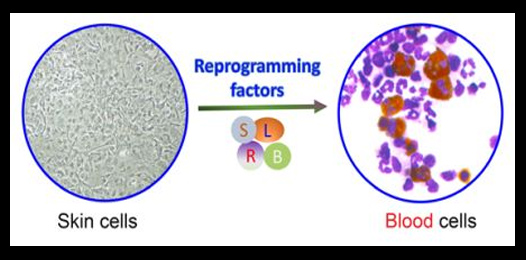Singapore scientists have successfully artificially generated new mouse blood and immune cells from skin cells, a significant first step towards the eventual goal: the engineering of new human blood cells from skin cells or other artificial sources.
One of the major challenges of regenerative medicine is to manufacture new blood and immune cells for patients in need.
This development could lead to a robust source of new blood or immune cells becoming available to treat patients with immune disorders and other such diseases, or those who require blood transfusions.
While there were previous efforts to generate new mouse blood cells from skin cells, the yielded cells could last only two weeks once injected back into mice.
In contrast, the artificially skin-derived blood cells in this study can last for multiple months in mice. Published in scientific journal Nature Communications, this study was led by researchers from A*STAR’s Genome Institute of Singapore (GIS) and Institute of Molecular and Cell Biology (IMCB).
To date, the researchers have identified a cocktail of four factors that can convert mouse skin cells into different types of blood cells.
By introducing the four factors that are normally active in blood cells into skin cells, they could artificially ‘rewrite’ skin cells to adopt features of blood cells.
“On the face of it, skin cells and blood cells couldn’t be more different from one another. We have been interested in whether it might be possible to rewrite the identity of cells, specifically to turn skin into blood,” said the study’s first author Dr Cheng Hui, who initiated this project as a postdoctoral fellow at GIS.
“This is not only of practical importance for regenerative medicine in terms of potentially yielding a source of new blood or immune cells, but it is also interesting from a fundamental biological perspective that two very different cells – like skin and blood – can be interconverted,” added Dr Kyle Loh, currently an investigator and instructor at Stanford Institute for Stem Cell Biology & Regenerative Medicine, Stanford University School of Medicine, and a member of the project team as a former GIS intern.
GIS Executive Director Prof Ng Huck Hui said, “This development could be a potential game-changer for regenerative medicine. If researchers are able to extend what they did with the mice to human cells in the foreseeable future, it can translate into tangible benefits for the patients in need.”
The Genome Institute of Singapore (GIS) is an institute of the Agency for Science, Technology and Research (A*STAR). It has a global vision that seeks to use genomic sciences to achieve extraordinary improvements in human health and public prosperity.
Established in 2000 as a centre for genomic discovery, the GIS will pursue the integration of technology, genetics and biology towards academic, economic and societal impact.
The key research areas at the GIS include Human Genetics, Infectious Diseases, Cancer Therapeutics and Stratified Oncology, Stem Cell and Regenerative Biology, Cancer Stem Cell Biology, Computational and Systems Biology, and Translational Research.
The Agency for Science, Technology and Research (A*STAR) is Singapore’s lead public sector agency that spearheads economic oriented research to advance scientific discovery and develop innovative technology.
Through open innovation, we collaborate with our partners in both the public and private sectors to benefit society. – BusinessNewsAsia.com
